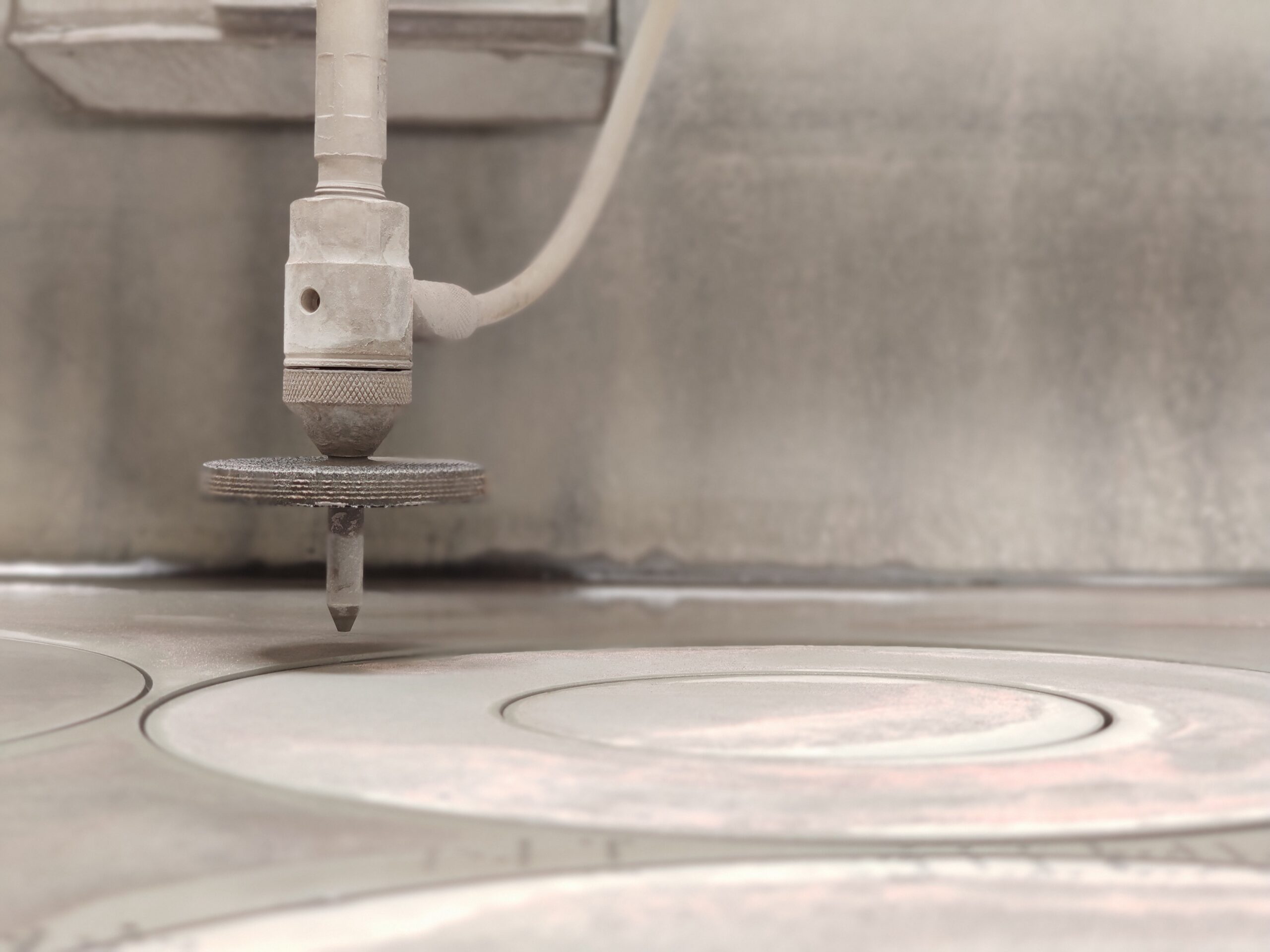Or what kind of component can we cut with water?!
The application area of waterjet cutting is much more diverse than that of thermal technology. Its major advantage over laser, plasma or flame is that it can be used on virtually all materials regardless of their structural composition, and it has a particularly high maximum cutting thickness. Essentially only the waterjet is capable of quality cutting aluminum.
It is important to mention that this is a fast cutting technology that does not alter the internal structure of the material along the cutting edges. The explanation for this is simple, there is no significant heating because the cutting edge itself also serves as a coolant additive. This is particularly beneficial for special alloys and precision parts, as there is no need for subsequent deburring, which removes burnt (heat-treated) areas, and the workpiece retains its engineer-calculated static and dynamic load coefficients. Thus, stronger, more durable, safer, and more precise components can be produced in various industries.
The waterjet system is capable of cutting metal or any other material sheet up to 150 mm thick! Such a powerful laser or plasma system does not currently exist, and there is not much effort being made to develop it because its operation would be uneconomical. In the case of thin sheet cutting, except for aluminum cutting, thermal cuts can be competitive if precision is not crucial. Thanks to this, there is no industry that cannot safely use waterjet technology.
Let’s specify…
It is very important to talk in detail about how different materials behave with the water jet. There are alloys and material qualities that can only be cut with this technology. Another group, depending on the cutting quality requirements, can also be processed by thermal cutting. The first category includes aluminium and its alloys, as well as copper, and non-metallic materials. For steel and stainless steel alloys, a solution may be cutting with heat if high precision is not required. However, above a certain thickness, these can also be cut using the water jet.
Spare parts manufacturing: Tool manufacturing, part production, semi-finished and finished product manufacturing, roughing, cutting, sheet metal cutting, confectioning.
Automotive industry: Preparation of assembly sheets, cutting of carpets, cutting of door trims.
Aircraft manufacturing: Cutting composites (kevlar, GFK/CFK etc.), heat-sensitive materials such as aluminium alloys, stainless steels and titanium.
Other uses: Cutting composites, heat-sensitive materials such as aluminium alloys, stainless steels and titanium; processing fiberglass products.
Packaging and textile industry: Cutting fabrics, coated papers, plastics; sandwich structures; foams and corrugated materials.
Construction industry: Contour cutting of marble tiles stone granite glass; cutting fiberglass materials soundproofing roof panels floor coverings.

